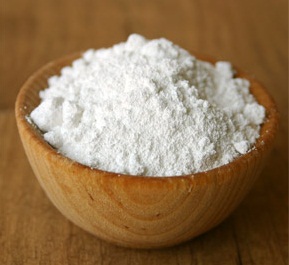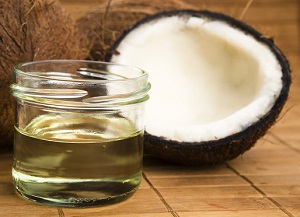
Approximately half of the adult population will be affected by nail fungus by the time they are seventy years of age. Nail fungus is a chronic fungal infection that affects either the toenails or fingernails, and eventually leads to the destruction of the nail bed. According to the National Institutes of Health, a fungal infection is more likely to affect the toenails rather than the fingernails, and more specifically the first toenail.
What Is Fungal Nail Infection?
A fungal nail infection is a fairly common condition that first appears as a yellow or white spot under the finger or toe nail. Eventually, as the fungus spreads, it can cause your nail to thicken, discolor and possible crumble at the edges. If the nail has thickened or it is painful, there are home remedies you can use to treat the fungus. Unfortunately, even with successful treatment, the fungus will eventually return. If it has spread to the area between your toes and the skin on your feet, the fungal infection is called athlete’s foot.
What Are the Symptoms of Fungal Nail Infection?
Fungal nail infections are not usually painful, but over time they can cause discomfort or pain when walking, standing for long periods, or wearing shoes. There are two different types of fungal infection and the type you have will determine your symptoms. The two types are:
- Distal Subungual Onychomycosis: This type affects both the nail as well as the bed underneath. The symptoms include yellow streaks under the nail and in the nail bed, thickened and discolored nail that could separate from the bed, a buildup of bits of skin and nail under the nail, and a broken, thick, or brittle nail.
- White Superficial Onychomycosis: This type affects only the nail surface. The symptoms include white streaks or spots on the nail, a soft and/or powdery nail surface as the infection worsens, and a brown or grey, crumbly or damaged nail surface. With this type of infection, the nail doesn’t separate from the nail bed.
Note: Not all infections in and around the nails are fungal infections. Eczema, psoriasis and Reiter’s syndrome can all have similar symptoms.
What Are Treatment Options for Fungal Nail Infection?
1. Medication
- Oral medicines. These are used for moderate to severe infections and work the best to cure the fungal infections. They are available by prescription. In the event of a bacterial fungal infection, you can also be prescribed an antibiotic. However, these medications for fungal nail infection may require close supervision due to the risks of side effects.
- Topical medicines. Topical medicines like creams, gels, lacquers and lotions are best applied in the infected nail and other areas of the skin. You can buy these in any local drug store and apply according to package directions. They can eliminate the fungal infection and prevent it from coming back. They can also be used to treat athlete’s foot, but they may not work as well as oral medications.
Note: If you are planning to use oral medicines, you have to determine the kind of fungal nail infection that you have, treatment cost, side effects as well as the pills, which can cure your condition.
2. Laser Treatment
The study tested the effectiveness of the carbon dioxide laser therapy used along with antifungal nail cream. Research shows that 24 people had benefitted from the laser treatment. However, laser treatment is not available everywhere and it is not covered by insurance.
3. Surgery
If you have severe fungal nail infection or if the condition is painful, your health care provider may recommend removing the nail. A new nail will grow in its place; however, the growth is slow. It may take a year before the new nail develops completely.
4. Natural Home Remedies
|
Home Remedy |
Why It Works |
What You Need |
How to Do It |
Note |
|
Tea Tree/Orange Oil Rub
|
Tea tree oil has natural disinfectant, anti-bacterial and fungicidal properties. Orange oil offer promising results to remove fungus. |
- 1 tsp. of tea tree oil - ½ tsp. of orange oil - ½ tsp. of grapeseed -cotton balls |
1. Combine the 1 tsp. of tea tree oil, ½ tsp. of orange oil and ½ tsp of grapeseed. 2. Soak the cotton balls in the mixture and put it in the affected nail. 3. Let it dry naturally. |
This treatment is best applied in the morning and evening. |
|
Baking Soda and Vinegar
|
Baking soda is fungistatic, which means that it can stop the fungus from spreading. |
- 4 to 5 tbsp. of baking soda -1 cup of vinegar - paper towels -water |
1. Combine the vinegar with water. Soak your feet for 15 minutes and pat dry. 2. Afterwards, fill some tbsp of baking soda to soak the feet. Pat dry with some paper towels. |
Repeat this fungal nail infection remedy for at least twice a day. |
|
Coconut Oil
|
The fatty acids present in coconut oil can insert in the lipid layer of the fungal membrane thus destroying the fungus. |
-coconut oil -gloves |
1. Wear gloves before applying coconut oil. 2. Rub the coconut oil on the affected area. 3. Let the coconut oil dry naturally. |
To treat fungal nail infection, repeat this process for 2-3 times daily. |
How to Prevent Fungal Nail Infection
To prevent or limit the spread of nail fungal infections, there are a number of steps you can take. These include following:
- Wear footwear in wet or damp communal areas such as locker rooms or pools.
- Replace old shoes.
- Keep the bathroom clean after showering or bathing.
- Change socks regularly.
- Treat other fungal infections such as athlete’s foot.
- Avoid sharing towels.
- Avoid nail injuries or trauma.
- Avoid repeated immersion in water if nails are already infected.
- Avoid manicure and pedicure tools that have not been properly sterilized.


